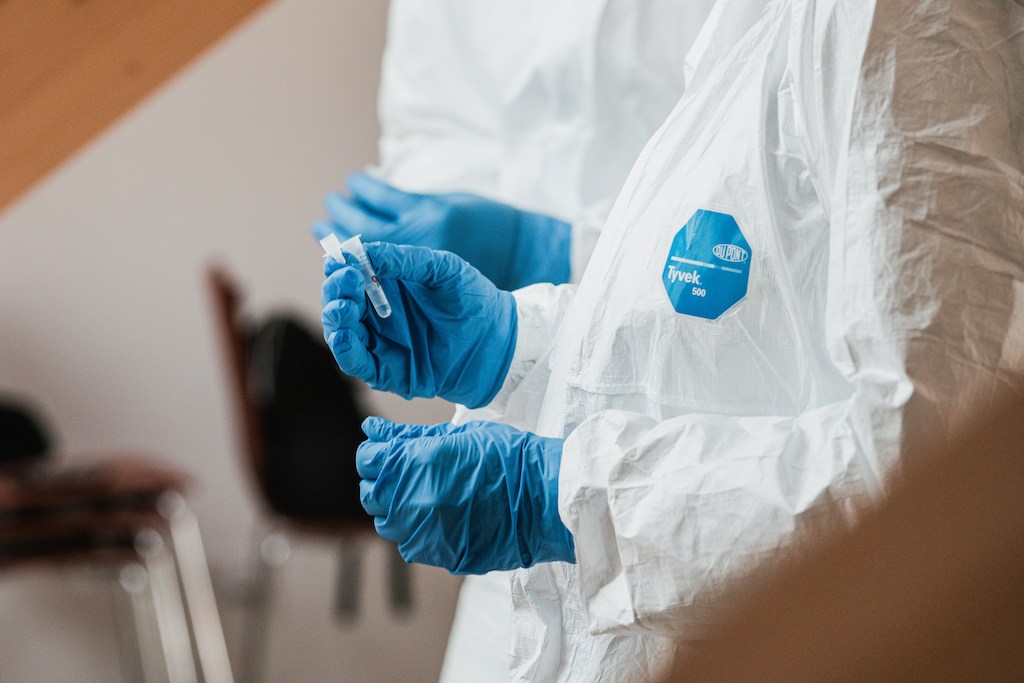Apr 9th 2024
PPE for Healthcare Workers: What to Look For
Introduction
Personal Protective Equipment (PPE) plays a crucial role in protecting healthcare workers from infection and reducing the risk of transmission to patients. In light of recent global health crises, it has become increasingly important for healthcare workers to understand how to select and use the right PPE. This comprehensive guide will help you make informed choices when it comes to PPE, ensuring you're well-protected and can continue providing the highest level of care to your patients.
Understanding PPE: Definition and Types
Personal Protective Equipment, or PPE, refers to specialized clothing and equipment designed to protect workers from potential hazards, such as infectious agents or harmful chemicals. In healthcare settings, PPE is essential for preventing the spread of infections, particularly when working with patients who have communicable diseases.
Common types of PPE for healthcare workers include:
- Gloves: Protect the hands from contamination and minimize the risk of transferring infectious agents.
- Gowns and coveralls: Provide barrier protection against fluids and infectious materials.
- Masks and respirators: Protect the nose and mouth from airborne particles, including bacteria and viruses.
- Face shields and goggles: Shield the eyes and face from splashes, sprays, and respiratory droplets.
- Head and shoe covers: Prevent contamination of hair and footwear and reduce the spread of infection.
- Aprons: Offer additional protection for the front of the body in situations involving high fluid exposure.
PPE should always be used as part of a larger infection prevention strategy that includes proper hand hygiene, cleaning, and disinfection practices.
Factors to Consider When Selecting PPE
When selecting PPE, it's crucial to consider the following factors:
- Healthcare worker's role and tasks: Assess the risks associated with different job functions and choose PPE that matches the task at hand. For example, a surgical mask may be suitable for routine patient care, while an N95 respirator is necessary for aerosol-generating procedures.
- Material quality and durability: Choose PPE made from reliable materials that offer the required level of protection. For example, nitrile gloves are more resistant to punctures and chemicals than latex gloves.
- Comfort and fit: Ensure the PPE fits well and is comfortable for extended wear. Ill-fitting PPE can compromise protection and may discourage proper use.
- Reusability and disposal: Understand whether the PPE is single-use or reusable, and follow proper disposal procedures to prevent contamination.
- Cost-effectiveness and affordability: Balance quality and cost when selecting PPE, considering the long-term implications of your choices.
Guidelines and Standards for PPE in Healthcare
Adhering to guidelines and standards set by regulatory bodies is essential when selecting and using PPE. Some key organizations and their recommendations include:
- World Health Organization (WHO): Provides global guidance on PPE use in healthcare settings, including recommendations for specific situations.
- Centers for Disease Control and Prevention (CDC): Offers guidelines for PPE selection and use in the United States, as well as resources for healthcare workers and facilities.
- Occupational Safety and Health Administration (OSHA): Sets requirements for PPE use in the workplace, including healthcare settings.
- European Union standards (EN): Establishes performance requirements and test methods for PPE used within the European Union.
Best Practices for PPE Use and Maintenance
To ensure optimal protection, healthcare workers must follow best practices for PPE use and maintenance:
- Proper donning and doffing techniques: Learn and follow the correct steps for putting on and removing PPE to reduce the risk of self-contamination.
- Storage and maintenance of PPE: Store PPE in a clean, dry area to prevent contamination and damage. Clean and disinfect reusable PPE according to the manufacturer's instructions, and inspect it regularly for signs of wear and damage.
- Training and education for healthcare workers: Continuous training on proper PPE use is essential. Empower yourself and your colleagues by staying informed about the latest guidelines, recommendations, and best practices for PPE selection and use.
Innovations and Future Trends in PPE
As technology and research advance, PPE continues to evolve. Some notable trends and innovations in PPE include:
- Advancements in PPE materials and design: New materials and designs are being developed to improve comfort, functionality, and protection. For example, antimicrobial coatings can enhance the infection prevention capabilities of PPE.
- Smart PPE technologies: Sensors and monitoring systems are being integrated into PPE to provide real-time feedback on proper fit, usage, and potential hazards. While these technologies are still emerging, they hold great potential for enhancing safety in healthcare settings.
- Environmental impact and sustainability: The PPE industry is increasingly focused on eco-friendly materials and manufacturing processes, as well as strategies to reduce PPE waste. For example, biodegradable gloves and gowns can help minimize the environmental impact of PPE disposal.
Conclusion
Personal Protective Equipment is a vital component of healthcare worker safety and infection prevention. By understanding the various factors that contribute to PPE selection, adhering to guidelines and standards, and staying informed about the latest advancements and best practices, healthcare workers can make confident choices when selecting and using PPE.
It's essential to prioritize PPE selection and use in healthcare settings, not only for the well-being of healthcare workers but also for the patients they serve. Stay informed, stay protected, and continue providing the highest level of care to your patients.


